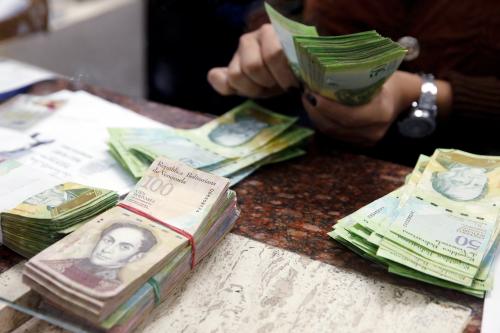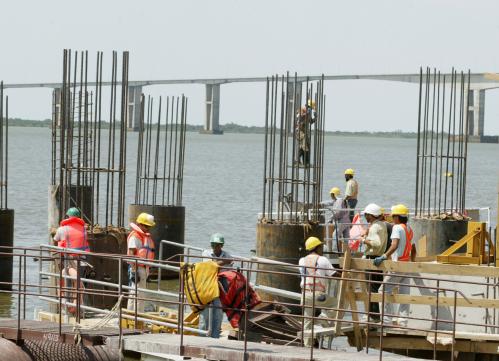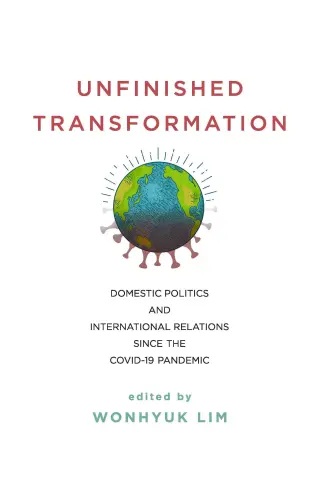On December 11-14, 2016, Ernesto Talvi participated in the Latin America Shadow Financial Regulatory Committee (CLAAF), held in Buenos Aires, Argentina. The committee is composed of a group of prestigious independent Latin American economists, former policymakers, and academics with strong expertise in the field of macroeconomics, banking and finance and whose goal is to identify and analyze challenges and risks for the region. The following document—Policy Statement Number 36—was released following the meetings. It discusses the headwinds and risks faced by Latin America in a challenging context of increasing backlash against globalization in the developed world and recommends a series of policy actions to mitigate the adverse effects of these external developments.
1. The new global political and economic scenario
As the committee has been claiming in past statements, the region has been facing a confluence of adverse events since at least the year 2013. These have come as waves: an event materializes, then there is a period of calm and then another comes. Until mid-2016, these (interrelated) events included: (1) the lack of dynamism in advanced economies; 2) China’s economic slowdown; 3) the sharp fall in the price of the region’s export commodities; 4) the appreciation of the dollar; and 5) the fall in capital flows. Unlike other periods of financial turbulence due to external factors, since 2013 these events have been long lasting. This implies that their effects on the region have been accumulating and the economies have been weakening even in a context of low interest rates and broad international liquidity.
Since mid-2016, a new wave of political developments in advanced countries has been shaking Latin America. This time the characteristics are different because they refer to the growth of the political movements that promote a reduction of globalization. In the United Kingdom, the Brexit phenomenon started this new trend and the presidential election in the United States cemented it.
This trend is still materializing because elections in other European countries could further strengthen anti-globalization positions in the advanced world.
Of all these developments, the most relevant has been Donald Trump’s election victory in the U.S. as he, with his campaign statements, has shaken the reigning political orthodoxy in both the Democratic and Republican parties. Although there is considerable uncertainty about the policies of a future Trump administration, as it has not yet begun, economic and financial variables have begun to anticipate what are considered to be the main consequences for the U.S. economy. For example, one month after the election, the dollar has strengthened 10 percent against the yen and 6 percent against the euro, the Dow has risen 7.7 percent, the volatility implied by the VIX is at nearly historically low levels and the consumer confidence index jumped 4.5 percent in December.
The perspectives of the future U.S. administration are associated with the following developments. First, the new administration is expected to reduce the tax burden on businesses and individuals, to adopt tax incentives to promote employment at the level of specific sectors and/or companies, and to try to implement a strong expansion of public expenditure on infrastructure. The result of this fiscal stimulus, which is expected to have no strong opposition in the U.S. Congress, will be a possibly significant increase in the fiscal deficit but also an expansion of aggregate demand. That is why different analysts of the U.S. economy are anticipating a higher rate of growth, at least in the short term.
However, these expectations have raised the yield on U.S. Treasury bonds in the long run. In particular, the possibility that the U.S. Treasury may resort to a significant issuance of “ultra-long-term” maturity bonds (over 30 years) may fuel the expectation of a steepening in the yield curve of U.S. Treasury bonds. The increase in the U.S. interest rate coincides with the beginning of a more rapid normalization period of the Federal Reserve’s monetary policy, with expected increases in short-term interest rates of between 50 and 100 basis points during 2017. Upward pressure on interest rates is also fueled by rising U.S. Treasury bond sales by China’s central bank, one of its biggest holders.
Second, the future Trump administration is expected to demonstrate greater trade protectionism, particularly toward China and Mexico, and to withdraw from the Trans-Pacific Partnership. As in the previous case, it is possible that greater protectionism in the U.S. may be expansive for the economy in the short-term, although it will probably generate very negative effects for the global economy. In addition, the apparent short-term success of such policies is likely to drive further growth of other anti-globalization and anti-system movements in the other advanced economies, particularly in Europe.
A sudden shift in policy by the world’s largest economy leads to worrying implications for the global economic outlook. First, fiscal expansion, as noted above, will increase international interest rates and this, as on previous occasions, may lead to greater volatility in capital flows affecting both emerging and advanced economies. Second, the more protectionist approach that is less interested in global coordination may increase the volatility of exchange rates between the major currencies (e.g., the U.S. dollar/euro rate), reviving the possibility of competitive devaluations at the global level. As a result, capital markets can easily experience severe turbulence.
As this committee has emphasized in its last statements, the Chinese economy has been facing severe difficulties prior to the presidential election in the U.S. These financial difficulties are largely the result of an extensive fiscal and monetary stimulus program that has led to an oversized formal and informal financial system. The consequent sharp decline in the rate of growth and the capital flows reversal has generated a steady reduction in the large stock of its international reserves, in order to contain a rapid depreciation of the renminbi. The committee believes that one of the main risks that would result from the adoption of more protectionist measures by the U.S. directed in particular toward China is that it might significantly aggravate a situation of pre-existing fragility. For example, a depreciation of the renminbi can be interpreted by the U.S. administration as currency manipulation.
This situation occurs in a context of increasing protectionism that has already been occurring, and is relatively sophisticated using para-tariff measures in the context of World Trade Organization rules. In fact, one of the salient features of the global economy has been the decline of world trade. For example, since 2008 the volume of global exports, as a measure of trade volume, has reduced its growth rate to half of what it was historically, even lower than the growth rate of global output.
In addition, Trump has announced the intention to relax existing environmental restrictions to the use of fracking techniques and the construction of oil and gas pipelines. This could lead to a significant expansion in the supply of unconventional hydrocarbons in the U.S., which, coupled with the effect of slower growth in China, could further depress international prices for energy products or, at least, keep them at low levels for an extended period.
Emerging economies are passive observers of these developments. With less flexibility of response than advanced economies, and in many cases with current account deficits, the emerging world and in particular Latin America is particularly exposed to the risks arising from the new policy approach in the north.
2. What does this mean for the region?
The changes in the global economic scenario described in the previous section will affect the region through four main channels: 1) a likely increase in international interest rates; 2) additional difficulties in China’s economy due to its financial weaknesses; (3) increased U.S. protectionism and, in particular, its effect on the Chinese economy; and 4) a greater degree of uncertainty about the evolution of the main economic variables, including the exchange rates between major currencies.
Since 2013, the external scenario has progressively become more unfavorable. Capital flows to Latin America had been declining even before the U.S. presidential election, even at low interest rates. The reduction in capital inflows coexisted with a significant drop in commodity prices, but the impact was not so strong because, as international interest rates remained low, market liquidity was broad. Thus, despite the deterioration in the external scenario, the public and private sectors in the region have not suffered a serious interruption in their access to financing because central markets exhibited near zero or even negative real yields. The search for yields prompted international investors to provide the necessary financing to the region so that maturities could be refinanced even without new investment projects, especially in countries with stagnant or falling economic activity (e.g., Brazil).
If international interest rates increase, the region may now face a combination of factors that has generated serious problems in the past: (1) reduction of capital flows; (2) deterioration of terms of trade; and (3) an increase in the cost of financing for the public and private sectors.
The impact of a possible increase in the U.S. interest rate, and a possible appreciation of the dollar, will depend on the specific characteristics of each economy in the region, in particular the size and composition of public and private debt, and the space and credibility of the central bank to respond with a flexible monetary policy. For example, to the extent that debt is denominated mostly in foreign currency, the impact of an increase in the international interest rate will have a direct effect on the cost of financing. In addition, appreciation of the dollar will magnify this impact, measured in real terms. Faced with greater dollarization of debt, monetary policy will face more pressure to avoid significant movements in the exchange rate.
In the case of countries where debt is denominated in local currency, the effect of an increase in the international interest rate will depend on its transmission to domestic interest rates, inflation conditions, and the level of domestic indebtedness. In some countries, such as Brazil and Colombia, central banks raised interest rates to avoid losing control of inflation expectations, given the very severe devaluation that took place after 2013, even in a context of low international interest rates. In Brazil, once the effect of inflation rates began to subside, the domestic interest rate has begun to fall from very high levels, despite an increase in costs of financing in foreign currency.
Another important element in analyzing the effects of an increase in the U.S. interest rate on the region is the adequacy of the stock of international reserves, which was instrumental in limiting the effects of the global financial crisis of 2008-2009. In this sense, the situation of the different countries in the region is varied. At one extreme are Argentina, Ecuador, and Venezuela with low levels of international reserves as a proportion of their short-term debt, and in the other are Bolivia, Chile (including the government’s international assets), and Peru. The accumulation of reserves in Brazil, Colombia, and Mexico has also been significant.
The region’s ability to face more adverse external financial conditions such as what we have described will depend significantly on the economies’ fiscal positions. In the clear majority of the countries of the region, the structural fiscal position has deteriorated, particularly in Argentina and Brazil. In the case of Argentina, where there is a high degree of dollarization of public debt, this entails a high need for financing in foreign currency.
The second channel of transmission from the new external scenario to the region is commercial. In the committee’s view, the increased risks of increased protectionism are related to the effects on the economies of Mexico and China. At present, there are doubts about the permanence of the region’s free trade agreements with the U.S., with NAFTA (which affects particularly Mexico) having the greatest uncertainty. The potential increase of tariffs on products imported by the U.S. that it considers to be competition to the products manufactured domestically. However, the committee believes that the integration that already exists in the value chains of goods manufactured in NAFTA will act in the direction of reducing protectionist pressures toward Mexico. However, the simple uncertainty that has been generated based on the campaign statements can cause a halt to direct foreign investment in Mexico.
Greater protectionism toward China, on the other hand, can have a very significant impact on the region. In some cases, the destabilization of China’s already fragile situation will have a direct effect on economies that have tightened direct financial ties with China. For example, Ecuador and Venezuela, which have increasingly used China’s financing (between 15 percent and 25 percent of GDP, respectively, up to 2015), may face sudden stop in capital flows from that country.
A possible additional deterioration in the Chinese economy will affect the countries of the region that export commodities through a decline of these commodities’ prices. This phenomenon could be aggravated in the event of a significant dismantling of environmental restrictions in the U.S. Especially in the area of hydrocarbons, the eventual adoption of a less environmentalist position by the future U.S. administration may result in an increase in the supply of these products.
3. Challenges and recommendations from the perspective of the Latin American experience
In the committee’s opinion, the external scenario facing the region in the coming years will be challenging. In this context, the region’s potential growth has declined reflecting a low rate of productivity and, in several countries, high levels of tax pressure. The space to use fiscal policy to stimulate the economy has been reduced. The committee’s recommendations should be seen as a contribution to reducing the adverse impact of the challenges discussed in the previous sections. These recommendations are valid in general, but particularly in a period where the external situation is subject to significant volatility and uncertainty.
Fiscal, monetary, and debt management policies
Several analysts suggest that Latin America should take advantage of the high liquidity and low international interest rates, while it lasts, to finance long-term and low-cost ambitious infrastructure programs that, in the short term, would mitigate the effect of low external demand and, in the medium term, contribute to improvements in productivity.
However, the committee emphasizes that most of the countries of the region have increased their structural fiscal deficit, compared to the average of the previous decade, and several have rapidly increased their level of public debt and, in some countries, foreign indebtedness with China has been significant and this is not incorporated into conventional databases. In addition, for a significant number of countries foreign debt increased sharply. In the past, during difficult times, private debt was nationalized, suggesting that, in some circumstances, external private indebtedness generates a contingent liability for the public sector.
In these circumstances, the committee recommends fiscal prudence. Some governments, such as Brazil and Colombia, are in the process of implementing fiscal consolidation measures. In Brazil, fiscal consolidation is being attacked by a ceiling on public spending and a reform of the social security system, while in Colombia a tax reform is being discussed that partially compensates for the loss of tax revenue generated by the drop of prices of raw materials.
However, greater fiscal prudence does not preclude taking advantage of the situation to finance carefully selected and executed investment programs, under reliable institutional structures, and making greater use of the financial and technical capacity of the World Bank, IADB (Inter- American Development Bank), and CAF (Andean Development Corporation – Development Bank of Latin America) for these purposes.
As long as international interest rates remain relatively low, active management of the public debt structure can significantly contribute to reducing external vulnerability. This includes taking measures to improve the maturity profile of indebtedness, avoiding concentration of maturing debt. It is also a priority to reduce exposure to exchange rate volatility and to strengthen the adequacy of international reserves.
As noted above, the region exhibits weaknesses in productivity that significantly limit its growth potential. The region will not grow again at the rates observed during the years of the commodity price boom if productivity does not increase. However, the current global scenario coupled with the risks described above have weakened demand and capacity gaps have widened. In this context, a demand stimulus is justified. As mentioned above, fiscal space is limited and therefore, this should be done on the monetary side. However, the effectiveness of monetary policy in periods of turbulence depends fundamentally on its credibility, and therefore timing and magnitude should depend on the conditions of each country. And even more, credibility will be determined by the long-term sustainability of the fiscal position.
The economic weakness with respect to their full capacity has been reflected, in most countries, in inflationary trajectories consistent with their goals. After facing serious challenges from the massive exchange rate depreciations that have taken place since the beginning of 2013, with risky consequences on the anchoring of inflation expectations. Today, there are opportunities for monetary stimulus that should contribute to an economic recovery, in the context of price stability. In a scenario of well-anchored inflationary expectations, the “fear of floating” should not hinder the conduct of monetary policy.
Regional integration
Those who have always been in favor of practicing protectionism in our region feel emboldened by the protectionist and nationalist announcements that are now coming in from the developed world. The committee considers, however, that it would be very inconvenient to give in to these temptations.
On the contrary, Latin America’s response should be that of greater regional integration, as a way of energizing our economies in the short-term and preparing them for a more efficient integration into the global economy, when the current protectionist tendencies of the developed world pass. In fact, deep regional integration, which tends toward the free movement of goods, services, people and capital in the region, would in the short term mitigate the adverse effects of the low dynamism of global trade, which may be aggravated if the protectionist announcements in the first world become reality, as well as any reduction of capital flows to the region. And, by increasing the regional productive efficiency, our region would become a more productive and competitive area for its global insertion. The fruits would be especially appreciated when global trade exceeds the current prostration period.
The committee notes that the conditions for a significant boost to these open integration objectives are being met. On the one hand, there are two groups of countries that have already opted for an aggressive strategy of this nature: the members of the Central American Common Market and those of the Pacific Alliance. Central America is already characterized by significant mobility of goods, services, capital and people within that sub-region, as well as considerable commercial and financial integration with the rest of the world. The Pacific Alliance, for its part, is proceeding with an ambitious agenda in the same direction.
Both groups have dismantled most of their mutual trade, harmonized their rules of origin and allowed accumulation, thereby facilitating the emergence of regional value chains. The banking and insurance market is virtually integrated in Central America and Colombia. To make this process more efficient and at the same time reduce the risks of financial contagion, the Council of Regulators and Supervisors of Central America and Colombia works closely in financial supervision and has made progress in harmonizing regulations. For its part, the Pacific Alliance has initiated an ambitious process of integration of its Stock Exchanges. The committee also notes the corporate interest acquired by Bovespa in three of the Pacific Alliance’s exchanges, indicating the interest and potential of an aggressive process of regional financial integration. The timing is very appropriate, given the risks of a significant reduction of capital flows to the region and the withdrawal of several global banks as a result of their weakening since the 2008 crisis and the regulations of Basel III.
For their part, the members of Mercosur are beginning to rethink their regional integration strategies. This is particularly true in the case of the new Argentine Government, but there is also a change in the new Brazilian government. These changes, accentuated by an adverse global environment, could result in a gradual convergence between Mercosur and the Pacific Alliance, as proposed by the Chilean Government. As many observers have pointed out, what is most lacking in Latin American integration is precisely the establishment of stronger trade and financial ties between the countries of the Southern Cone and those of the North.
Multilateral organizations
Finally, it is expected that international financial institutions play a more aggressive precautionary role vis-à-vis the new risks of the global environment. In particular, the capitalized International Monetary Fund (IMF) should be more proactive in offering the contingent credit line to countries with sound fundamentals. The committee considers that the time has come to envisage that the Fund automatically pre-qualify countries that could benefit from unconditional and immediate access to this facility, without the need for an application or commitment fee, in return for a disbursement interest rate that is higher than the current one.
And, as already mentioned, the World Bank, IADB, and CAF should take advantage of the low interest rate environment, while it lasts, to channel low-cost and very long-term resources to well-studied and managed infrastructure projects in the region.
The region should, as a complement, strengthen its regional financial institutions (CAF and the Latin American Reserves Fund (FLAR). As the committee has noted, turning the FLAR into a first-instance regional monetary fund (with the IMF as the lender of last resort) would be a logical development of the agreed principles for the international financial architecture and would be very timely given the risks that are noticed in the international financial market.
The Latin American Committee on Financial Issues (CLAAF) is grateful to the Center for Global Development (CGD), the Banco de la Ciudad de Buenos Aires, the Banco de Desarrollo de America Latina (CAF), the Latin American Reserve Fund (FLAR) and the Central Bank of Chile for their financial support of its activities. The committee is fully independent and autonomous in the drafting of its Statements.
The Brookings Institution is committed to quality, independence, and impact.
We are supported by a diverse array of funders. In line with our values and policies, each Brookings publication represents the sole views of its author(s).








Commentary
Op-edLatin America in a new global political and economic scenario: What does it mean for the region?
February 2, 2017